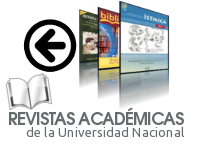Efeitos de um protocolo de treinamento excêntrico sobre o desempenho de velocidade para adolescentes chilenos
DOI:
https://doi.org/10.15359/mhs.19-1.3Palavras-chave:
Velocidade, contração muscular, treinamento físicoResumo
Introdução: Os benefícios do treinamento de força na velocidade de corrida foram descritos na literatura especializada, no entanto, não foram demonstradas evidências sobre a influência de estímulos específicos, baseados em contrações excêntricas na musculatura extensora do quadril. Objetivo: Determinar os efeitos de um protocolo de treinamento baseado em contrações excêntricas (cacho nórdico) em velocidade de corrida de 20 m em adolescentes da região do Ñuble, Chile. Metodologia: 42 escolares foram divididos em um grupo experimental (n=22) e um grupo controle (n=20). O treino foi desenvolvido durante 6 semanas, com uma frequência de 2 sessões/semana, passando de um volume de 8 para 32 repetições de ondulação nórdica por sessão para o grupo experimental. O desempenho da velocidade foi avaliado acima de 20 metros. O teste T de Student foi usado para comparar os resultados pré e pós-intervenção e o tamanho do efeito (TE) foi calculado. Resultados: Foram encontradas diferenças estatisticamente significativas (p<0,05) da intervenção no grupo experimental (pré= 3,43 s. vs pós= 3,15 s.), e um TE grande (1,04). Conclusão: Conclui-se que o treinamento excêntrico baseado na aplicação do Curl nórdico melhora o desempenho da velocidade de corrida.
Referências
Akl, A. R. (2013). The role of biomechanical parameters and muscle activity during eccentric and concentric contractions in vertical jump performance. Journal of Physical Education and Sport, 13(3), 430–437. https://doi.org/10.7752/jpes.2013.03069
Al Attar, W. S. A., Soomro, N., Sinclair, P. J., Pappas, E., y Sanders, R. H. (2017). Effect of Injury Prevention Programs that Include the Nordic Hamstring Exercise on Hamstring Injury Rates in Soccer Players: A Systematic Review and Meta-Analysis. Sports Medicine, 47(5), 907–916. https://doi.org/10.1007/s40279-016-0638-2
Alcaraz, P. E., Carlos-Vivas, J., Oponjuru, B. O., y Martínez-Rodríguez, A. (2018). The Effectiveness of Resisted Sled Training (RST) for Sprint Performance: A Systematic Review and Meta-analysis. Sports Medicine, 48(9), 2143–2165. https://doi.org/10.1007/s40279-018-0947-8
Alonso-Fernández, D., Fernández-Rodríguez, R., y Abalo-Núñez, R. (2018). Changes in rectus femoris architecture induced by the reverse nordic hamstring exercises. The Journal of Sports Medicine and Physical Fitness. https://doi.org/10.23736/S0022-4707.18.08873-4
Askling, C., Karlsson, J., y Thorstensson, A. (2003). Hamstring injury occurrence in elite soccer player after preseason strength trainning with eccentric overload. Scand J Med Sci Sports, 13(4), 244–250. https://doi.org/10.1034/j.1600-0838.2003.00312.x
Asociación Médica Mundial. (2017). Declaración de Helsinki de la AMM – Principios éticos para las investigaciones médicas en seres humanos. https://www.wma.net/es/policies-post/declaracion-de-helsinki-de-la-amm-principios-eticos-para-las-investigaciones-medicas-en-seres-humanos/
Beato, M., Madruga-Parera, M., Piqueras-Sanchiz, F., Moreno-Pérez, V., y Romero-Rodriguez, D. (2019). Acute Effect of Eccentric Overload Exercises on Change of Direction Performance and Lower-Limb Muscle Contractile Function. Journal of Strength and Conditioning Research, (36), 1–7. https://doi.org/10.1519/jsc.0000000000003359
Bourne, M. N., Duhig, S. J., Timmins, R. G., Williams, M. D., Opar, D. A., Al Najjar, A., Graham, K. K, y Shield, A. J. (2017). Impact of the Nordic hamstring and hip extension exercises on hamstring architecture and morphology: Implications for injury prevention. British Journal of Sports Medicine, 51(5), 469–477. https://doi.org/10.1136/bjsports-2016-096130
de Hoyo, M., Pozzo, M., Sanudo, B., Carrasco, L., Gonzalo-Skok, O., Dominguez-Cobo, S., y Moran-Camacho, E. (2014). Effects of a 10-week In-Season Eccentric Overload Training Program on Muscle Injury Prevention and Performance in Junior Elite Soccer Players. Int J Sports Physiol Perform, 10(1), 46–52. https://doi.org/10.1123/ijspp.2013-0547
Douglas, J., Pearson, S., Ross, A., y McGuigan, M. (2017). Chronic Adaptations to Eccentric Training: A Systematic Review. Sports Medicine, 47(5), 917–941. https://doi.org/10.1007/s40279-016-0628-4
Freeman, B. W., Young, W. B., Talpey, S. W., Smyth, A. M., Pane, C. L., y Carlon, T. A. (2019). The effects of sprint training and the Nordic hamstring exercise on eccentric hamstring strength and sprint performance in adolescent athletes. Journal of Sports Medicine and Physical Fitness, 59(7), 1119–1125. https://doi.org/10.23736/S0022-4707.18.08703-0
González Badillo, J. J., y Ribas Serna, J. (2002). Bases de la programación del entrenamiento de fuerza. [E-book]. https://books.google.co.cr/books?id=gewwCRUtT6gC&printsec=frontcover#v=onepage&q&f=false
Hermassi, S., Chelly, M. S., Fieseler, G., Bartels, T., Schulze, S., Delank, S., Shephard, R., & Schwesig, R. (2017). Effects of In-Season Explosive Strength Training on Maximal Leg Strength, Jumping, Sprinting, and Intermittent Aerobic Performance in Male Handball Athletes. Thieme, 31(3), 167–173. https://doi.org/10.1055/s-0043-103469
Hernández, R., Fernández, C., y Baptista, M. (2010). Metodología de la investigación. [E-book]. https://www.uca.ac.cr/wp-content/uploads/2017/10/Investigacion.pdf
Hopkins, W. G., Marshall, S. W., Batterham, A. M., y Hanin, J. (2009). Progressive statistics for studies in sports medicine and exercise science. Medicine and Science in Sports and Exercise, 41(1), 3–12. https://doi.org/10.1249/MSS.0b013e31818cb278
Ishøi, L., Hölmich, P., Aagaard, P., Thorborg, K., Bandholm, T., y Serner, A. (2018). Effects of the Nordic Hamstring exercise on sprint capacity in male football players: a randomized controlled trial. Journal of Sports Sciences, 36(14), 1663–1672. https://doi.org/10.1080/02640414.2017.1409609
Kilic, O., Kemler, E., y Gouttebarge, V. (2018). The “sequence of prevention” for musculoskeletal injuries among adult recreational footballers: A systematic review of the scientific literature. Physical Therapy in Sport, 32, 308–322. https://doi.org/10.1016/j.ptsp.2018.01.007
Krommes, K., Petersen, J., Nielsen, M. B., Aagaard, P., Hölmich, P., y Thorborg, K. (2017). Sprint and jump performance in elite male soccer players following a 10-week Nordic Hamstring exercise Protocol: A randomised pilot study. BMC Research Notes, 10(1), 1–6. https://doi.org/10.1186/s13104-017-2986-x
Maffiuletti, N. A., Aagaard, P., Blazevich, A. J., Folland, J., Tillin, N., y Duchateau, J. (2016). Rate of force development: physiological and methodological considerations. European Journal of Applied Physiology, 116(6), 1091–1116. https://doi.org/10.1007/s00421-016-3346-6
Maroto-Izquierdo, S., García-López, D., y De Paz, J. A. (2017). Functional and Muscle-Size Effects of Flywheel Resistance Training with Eccentric-Overload in Professional Handball Players. Journal of Human Kinetics, 60(1), 133–143. https://doi.org/10.1515/hukin-2017-0096
Mendiguchia, J., Martinez-Ruiz, E., Morin, J. B., Samozino, P., Edouard, P., Alcaraz, P. E., Esparza-Ros., & Mendez-Villanueva, A. (2015). Effects of hamstring-emphasized neuromuscular training on strength and sprinting mechanics in football players. Scandinavian Journal of Medicine and Science in Sports, 25(6), e621–e629. https://doi.org/10.1111/sms.12388
Mero, A., Komi, P. V., y Gregor, R. J. (1992). Biomechanics of Sprint Running a Review. Sports Medicine, 13(6), 376–392. https://doi.org/10.2165/00007256-199213060-00002
Morin, J. B., Gimenez, P., Edouard, P., Arnal, P., Jiménez-Reyes, P., Samozino, Brughelli, M., & Mendiguchia, J. (2015). Sprint acceleration mechanics: The major role of hamstrings in horizontal force production. Frontiers in Physiology, 6, 1–14. https://doi.org/10.3389/fphys.2015.00404
Ravé, J. M. G., Abella, C. P., y Valdivieso, F. N. (2014). Entrenamiento deportivo. Editorial Medicapanamericana.
Ribeiro-Alvares, J. B., Marques, V. B., Vaz, M. A., y Baroni, B. M. (2018). Four Weeks of Nordic Hamstring Exercise Reduce Muscle Injury Risk Factors in Young Adults. Journal of Strength and Conditioning Research, 32(5), 1254–1262. https://doi.org/10.1519/JSC.0000000000001975
Rodríguez-Rosell, D., Franco-Márquez, F., Mora-Custodio, R., y González-Badillo, J. J. (2017). Effect of High-Speed Strength Training on Physical Performance in Young Soccer Players of Different Ages. Journal of Strength and Conditioning Research, 31(9), 2498-2508. https://doi.org/10.1519/JSC.0000000000001706
Roig, M., O’Brien, K., Kirk, G., Murray, R., McKinnon, P., Shadgan, B., y Reid, W. D. (2009). The effects of eccentric versus concentric resistance training on muscle strength and mass in healthy adults: A systematic review with meta-analysis. British Journal of Sports Medicine, 43(8), 556–568. https://doi.org/10.1136/bjsm.2008.051417
Schache, A. G., Dorn, T. W., Blanch, P. D., Brown, N. A. T., y Pandy, M. G. (2012). Mechanics of the human hamstring muscles during sprinting. Medicine and Science in Sports and Exercise, 44(4), 647–658. https://doi.org/10.1249/MSS.0b013e318236a3d2
Seymore, K. D., Domire, Z. J., DeVita, P., Rider, P. M., y Kulas, A. S. (2017). The effect of Nordic hamstring strength training on muscle architecture, stiffness, and strength. European Journal of Applied Physiology, 117(5), 943–953. https://doi.org/10.1007/s00421-017-3583-3
Siddle, J., Greig, M., Weaver, K., Page, R. M., Harper, D., y Brogden, C. M. (2018). Acute adaptations and subsequent preservation of strength and speed measures following a Nordic hamstring curl intervention: a randomised controlled trial. Journal of Sports Sciences, 37(8), 911–920. https://doi.org/10.1080/02640414.2018.1535786
Tansel, R. B., Salci, Y., Yildirim, A., Kocak, S., y Korkusuz, F. (2008). Effects of eccentric hamstring strength training on lower extremity strength of 10-12 year old male basketball players. Isokinetics and Exercise Science, 16(2), 81–85. https://doi.org/10.3233/IES-2008-0300
Publicado
Como Citar
Edição
Seção
Licença
Termos e condições gerais

MHSalud: Revista en Ciencias del Movimiento Humano y Salud da Universidad Nacional é licenciada sob uma Licença Creative Commons Attribution-NonCommercial-NoDerivatives 3.0 Costa Rica.
A revista está hospedada em repositórios de acesso aberto, como o Repositório Institucional da Universidade Nacional, o Repositório Kimuk da Costa Rica e a Referência.
A fonte editorial da revista deve ser reconhecida. Use para esse fim o identificador doi da publicação.
Política de autoarquivamento: A revista permite o autoarquivamento de artigos em sua versão revisada, editada e aprovada pelo Conselho Editorial da revista para que estejam disponíveis em Acesso Aberto através da Internet. Mais informações no link a seguir: https://v2.sherpa.ac.uk/id/publication/25815


















